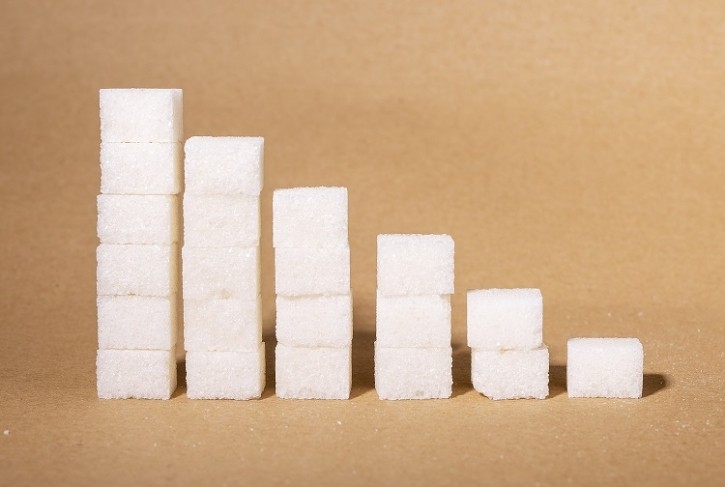Sugar reduction: Three learnings from growth markets

Excessive sugar consumption is bad news for population health: it’s known to increase the risk of developing obesity and non-communicable diseases such as dental caries.
Pressure to cut the sweet stuff from food and beverage formulations is at an all-time high, and not just in mature markets, with a long track-record of wealth and prosperity.
Growth markets are also big into sugar reduction, but often in different ways to the rest of the world. We round-up three sugar reduction trends and strategies outside of Europe and North America.
1. Local sugar reduction technologies often work best
No two growth markets are the same. As such, the tools leveraged to reduce sugar reduction must be appropriate to the geography in question.
What is a 'growth market'?
A so-called growth market is sometimes referred to as an emerging market. But as Andrew Taylor, president, growth markets, Tate & Lyle explains, many of these markets have already ‘emerged’.
The ingredients supplier categorises ‘growth markets’ as Asia Pacific, Turkey, the Middle East, Africa, and Latin America. These markets make up around 130 countries and 85% of the world’s population.
A good example is China, which according to the Global Stevia Institute, is the leading producer of stevia globally.
Stevia – a sweet sugar substitute around 50-300 times sweeter than sugar – comes from the leaves of the Stevia rebaudiana plant. Originally native to South America, the plant has been grown in Asia for ‘hundreds’ of years, explains Andrew Taylor, president, growth markets, at ingredients supplier Tate & Lyle. “It’s well known, well accepted, and very much a tool that’s used [locally].”
In the Philippines, too, stevia is well accepted. The Government has implemented a sugar tax on all sweeteners, except for beverages sweetened with coco sugar or stevia.
In the Middle East, on the other hand, where consumers have a sweet tooth for baked goods, stevia doesn’t make the ‘very short list’ of top sweeteners. Instead, Middle Eastern countries are more likely to use other technologies, such as fructose or no-calorie sweetener sucralose.
“We really see that taste is local, and that’s what the consumer will accept,” says Taylor, adding that despite the trend for sugar reduction being global, solutions are ‘wildly different as you go across the world’.
2. The sweetest palettes aren’t always found in growth markets
It’s often thought that the sweetest palettes are found in growth markets. Rumours – many unfounded – that some well-known soft drinks are formulated to taste sweeter in growth markets compared to say, Europe, have served to back up this belief.
But it is only that, a ‘belief’, according to Tate & Lyle’s Taylor. One can’t make a sweeping statement that consumers in growth markets prefer sweeter food and drink. What can be verified is that certain parts of the growth markets have ‘really high’ sugar usage per capita.
The highest in the world, in no particular order, include Mexico, parts of the Middle East, and the US. “There are several places [in growth markets], but not only in those places.”
And even in the US, propensity for sweetness can differ enormously. With a landmass of 9.83m km² and a population size of 33m, it’s challenging to group all 50 states together in terms of consumer needs and desires.
It’s unlikely sugar consumption per capita is very high in green smoothie-loving Los Angeles, for example. “The US is not only place, but many places. How something works in New York and San Francisco is different from Alabama.”
Why are growth markets grouped together?
Why group these markets together? From a consumer perspective there are commonalities, explains Andrew Taylor, president, growth markets, Tate & Lyle. “What those consumers need looks pretty different in the central part of the US or in Paris.”
Much of that comes down to buying power, which is tied to macroeconomics. To offer a contrasting economic situation, growth in Indonesia is sitting around 5%, whereas in Central Europe it’s at less than 1%.
Secondly, many growth markets are facing similar and conflicting crises: that of malnutrition and obesity. This is the case in Indonesia and parts of the Middle East, for example, where countries have ‘big problems’ with obesity and ‘massive problems’ with malnutrition, says Taylor.
“The tools you need to use in those places are pretty different than the tools you would use…in the US, for example.”
3. Often it's the growth markets, not the mature markets, leading the charge on sugar reduction
Sugar-sweetened beverage (SSB) taxes are increasingly commonplace on the world stage. Commonly referred to as a ‘sugar tax’, they work by enforcing an additional level of tax on SSBs above that applied to most food and beverage products.
A number of US cities (think Berkeley and Philadelphia, San Francisco and Albany) have enforced extra charges on sugary drinks. The UK, too, has been implementing a two-tiered soft drinks industry levy (SIDL) since 2018.
But one would be wrong to assume that it’s the mature markets leading the charge here. According to Tate & Lyle’s Taylor, some growth markets are absolutely leaders in sugar reduction regulation. Indeed, many are ahead of more mature markets in this sense.

Unsurprisingly, these ‘growth’ countries are often those with sugar-heavy diets and related public health concerns. Mexico and the Philippines are two that Taylor cites as at the ‘forefront’ of sugar reduction policy.
But it’s Indonesia and Chile that are amongst the leaders in sugar-related front-of-pack labelling and taxes, and have been for years.
When countries in the EU and states in America look to implement these kinds of regulations, they turn to growth markets for inspiration, he explains, not the other way around.



























